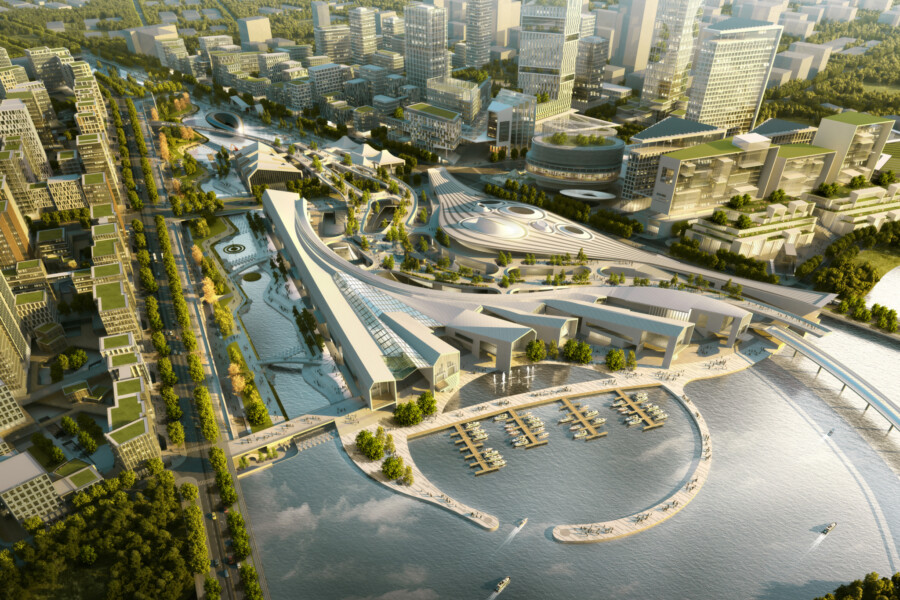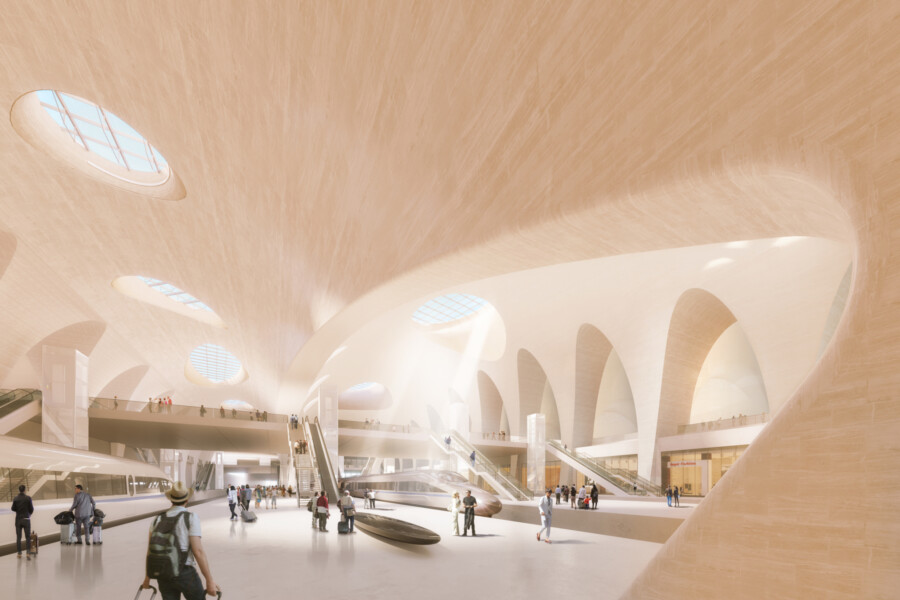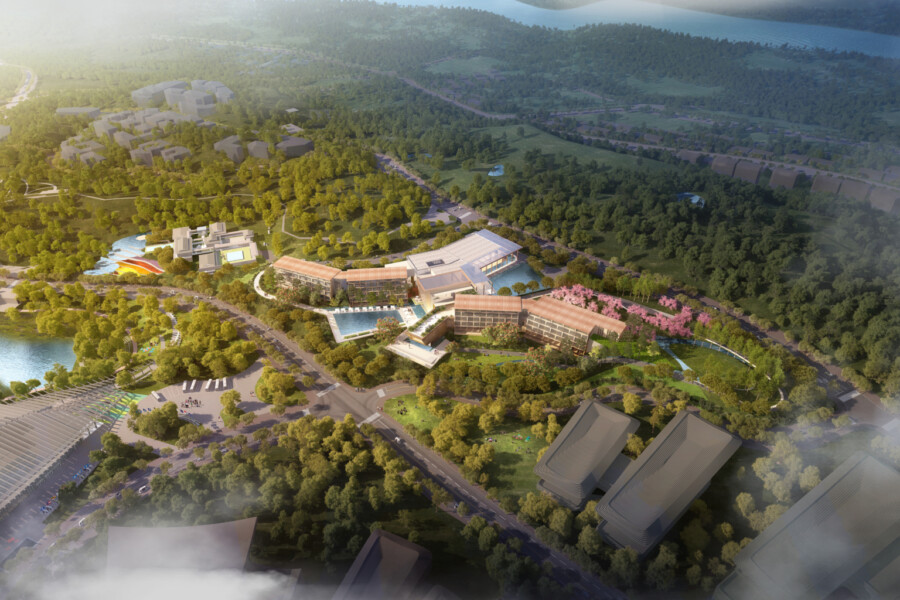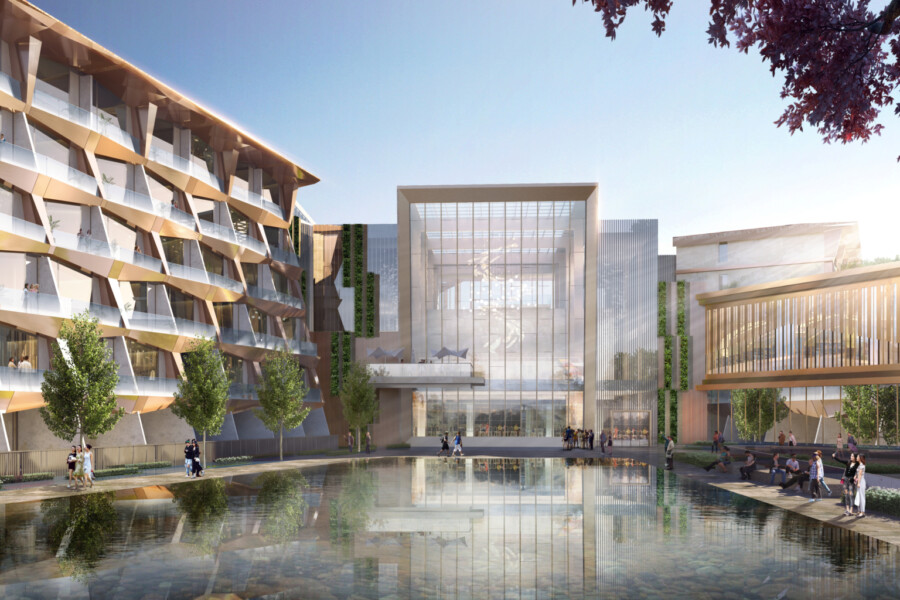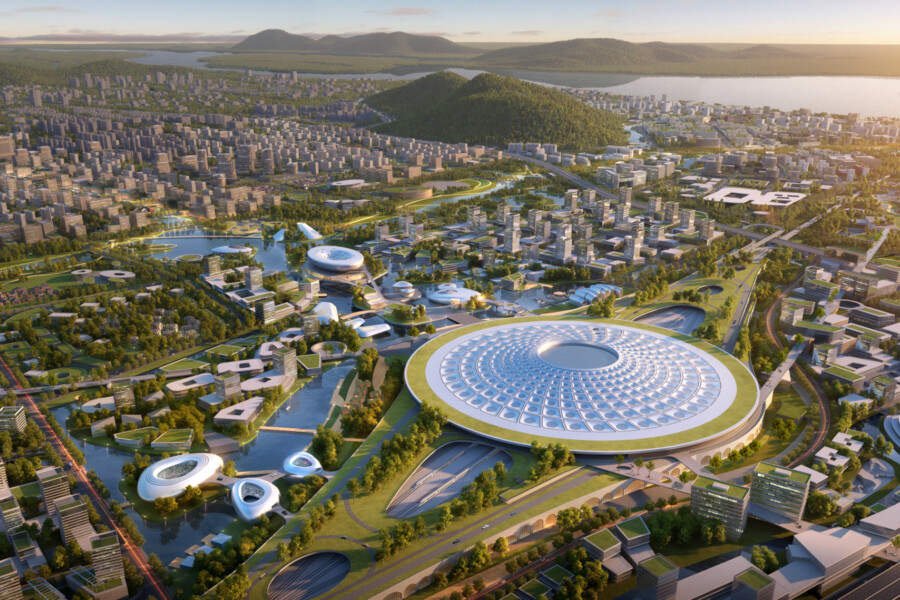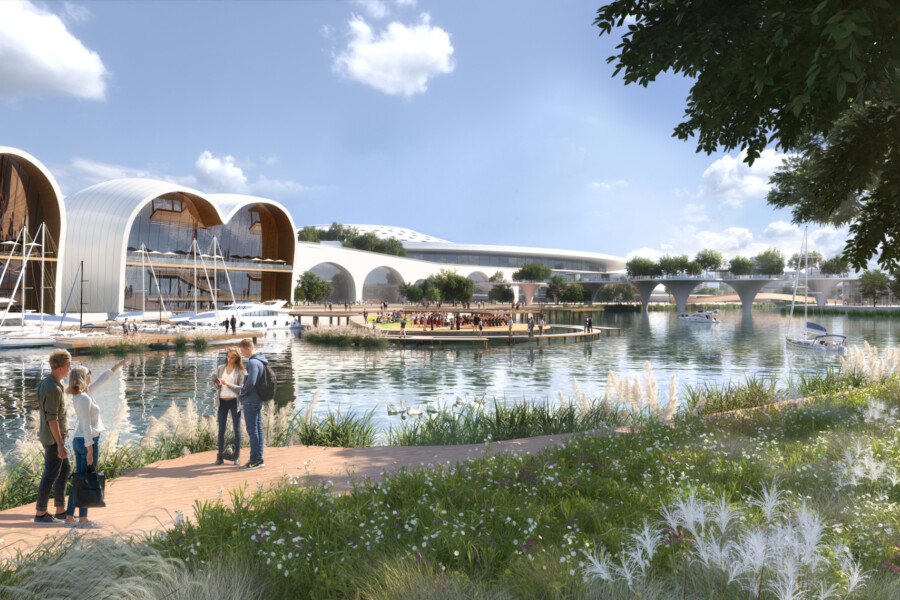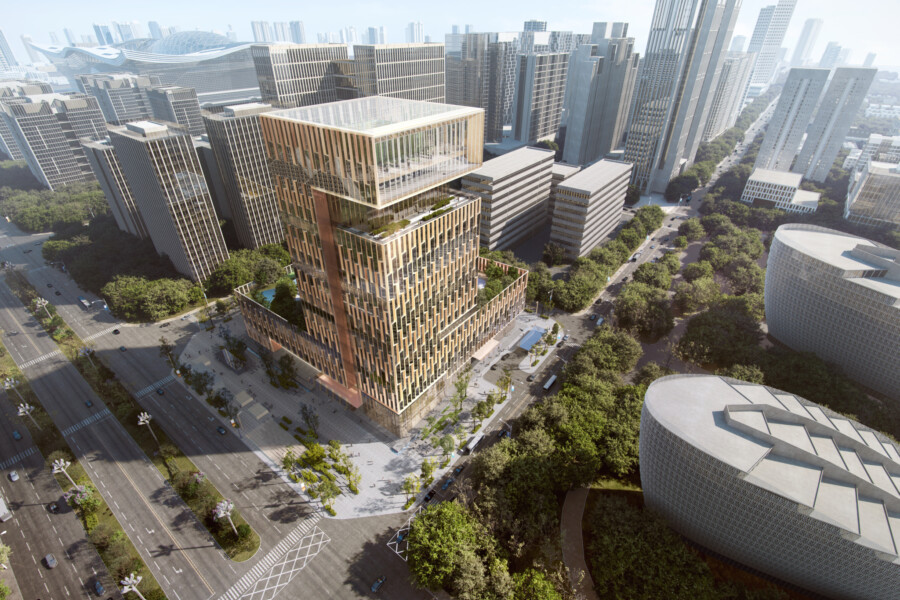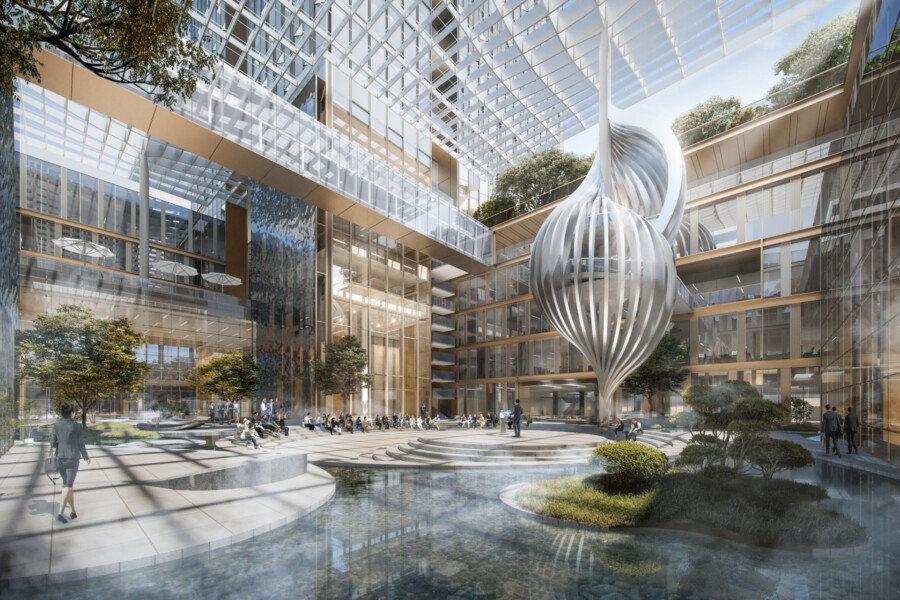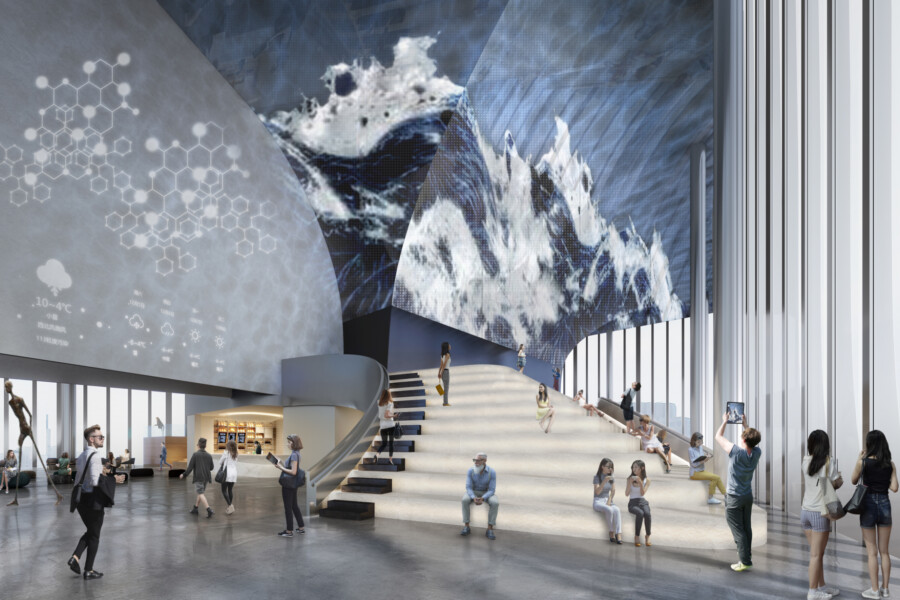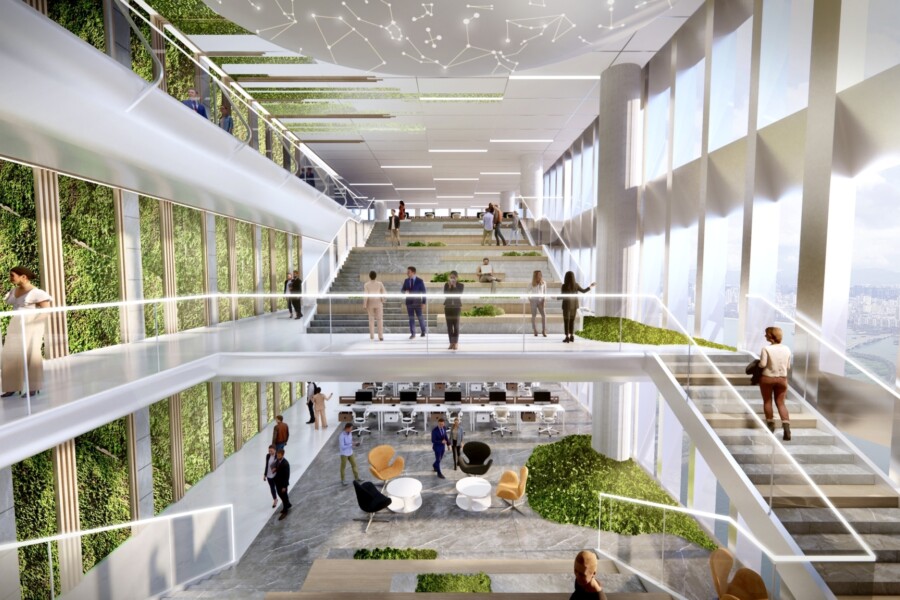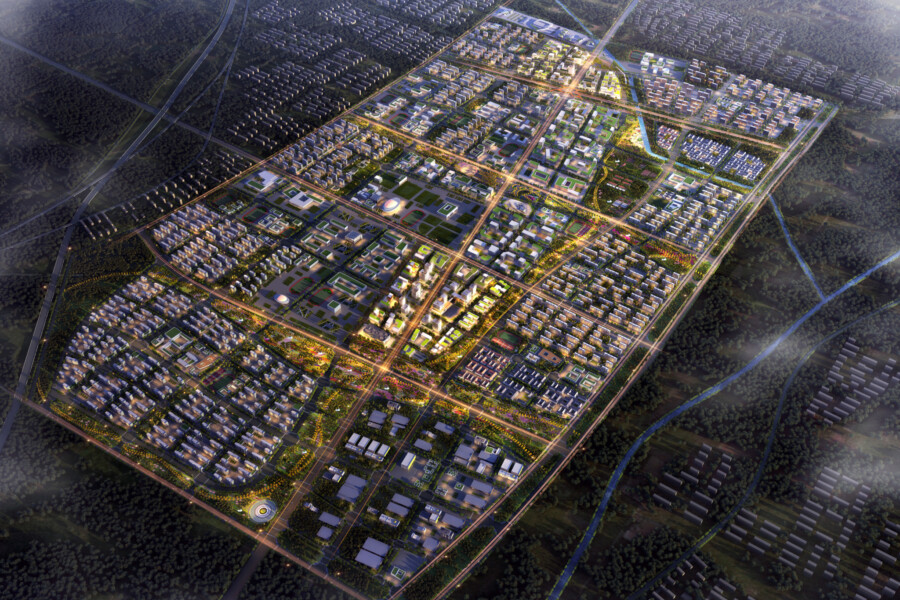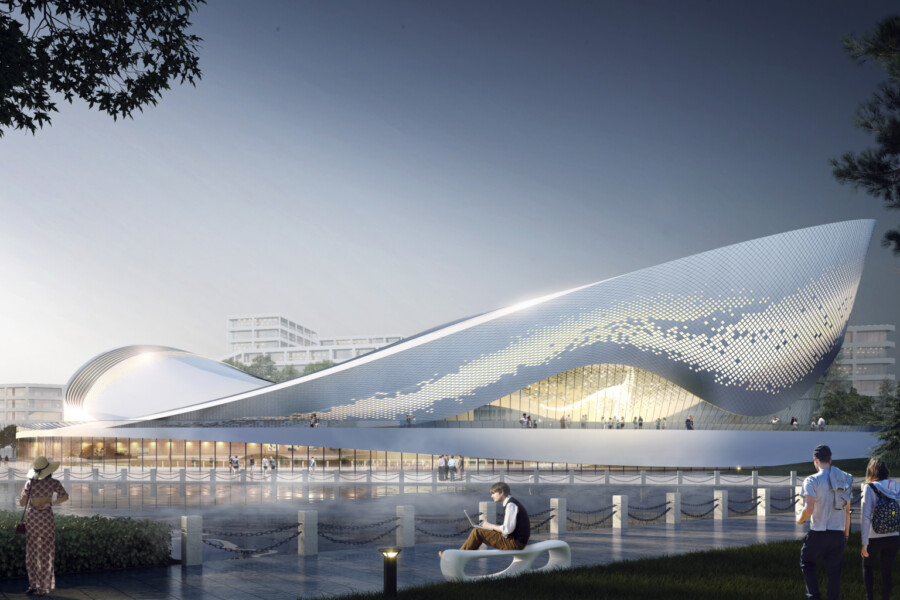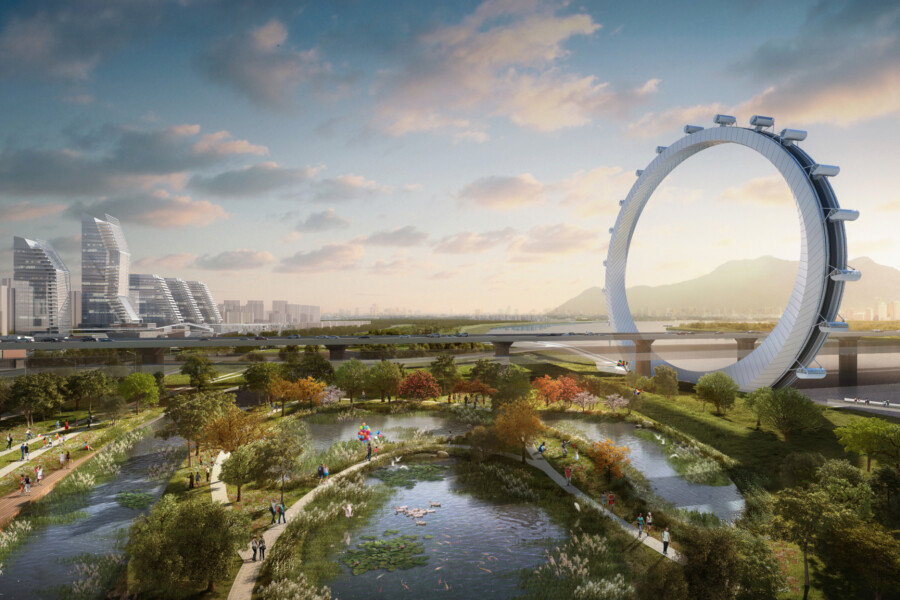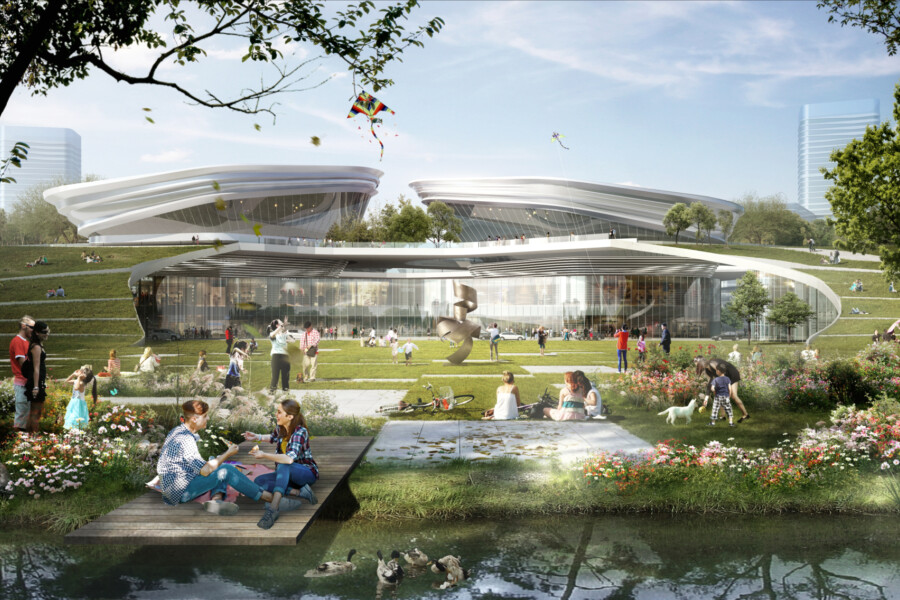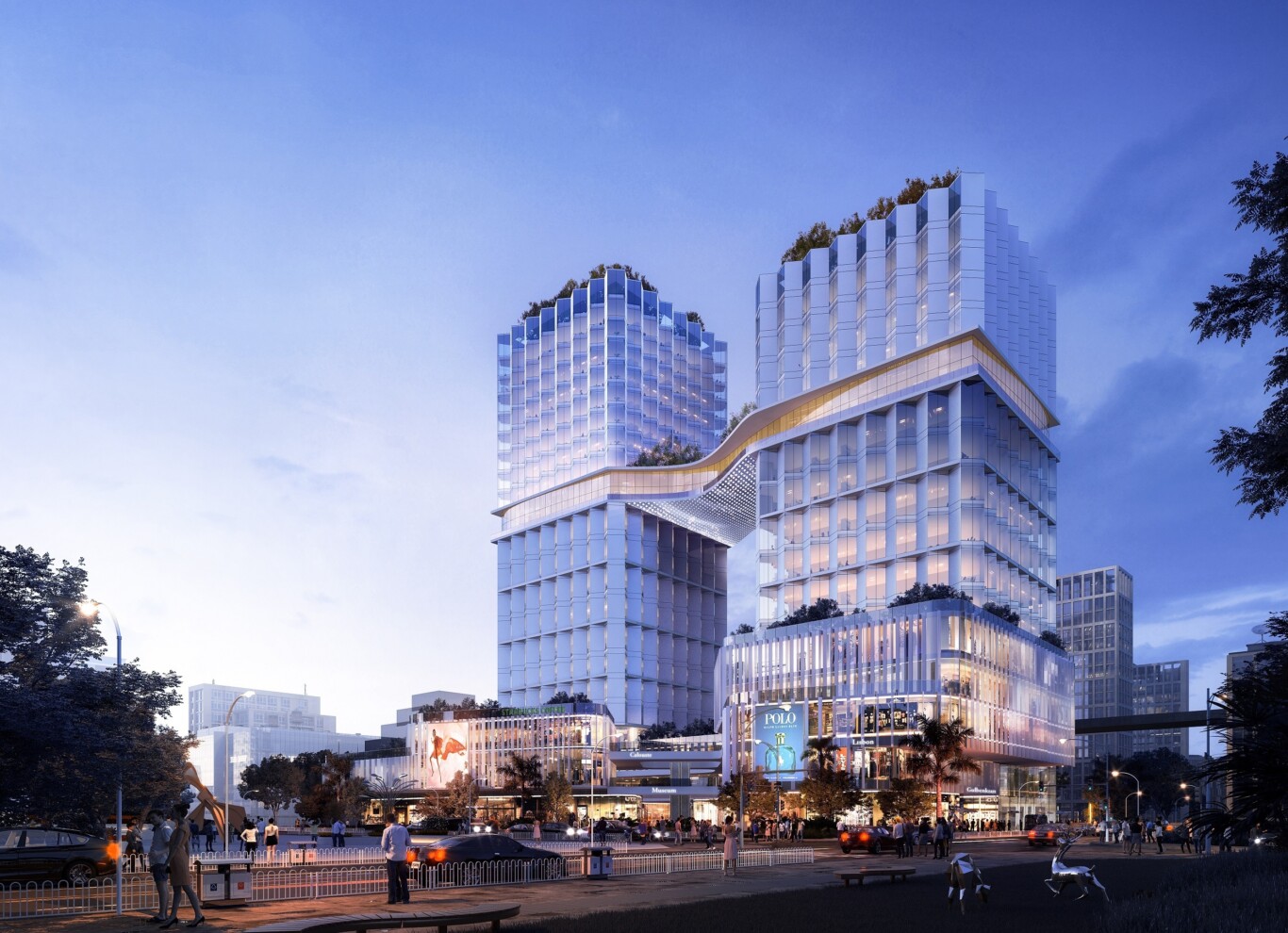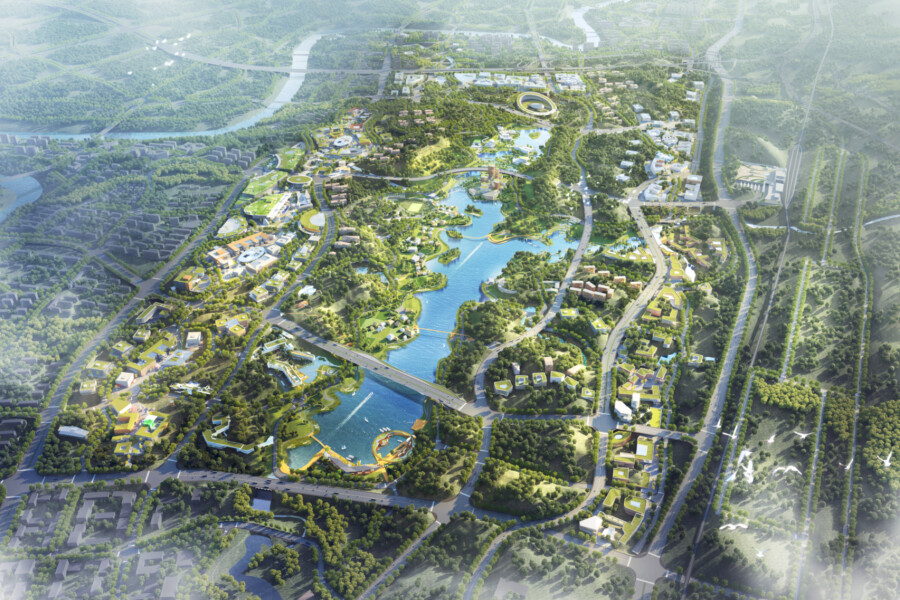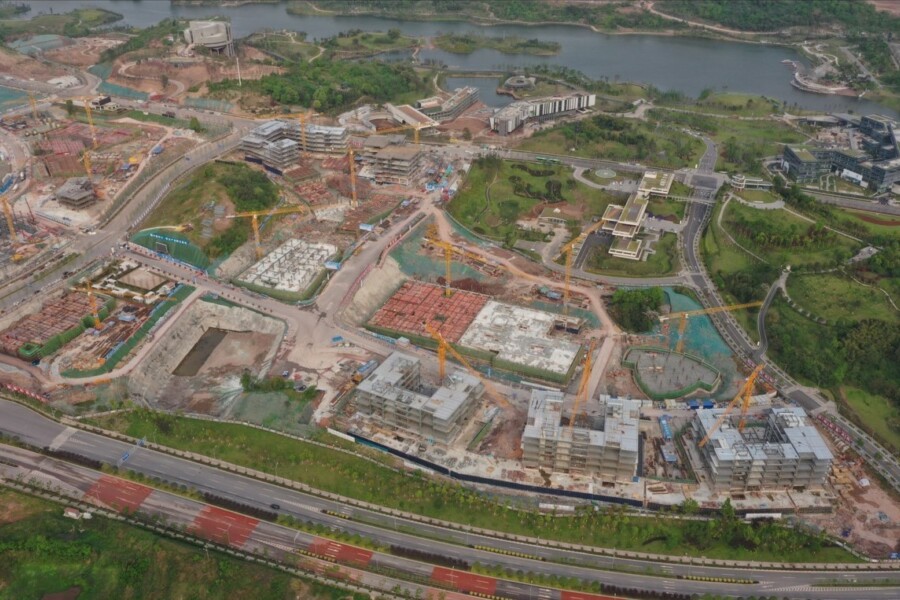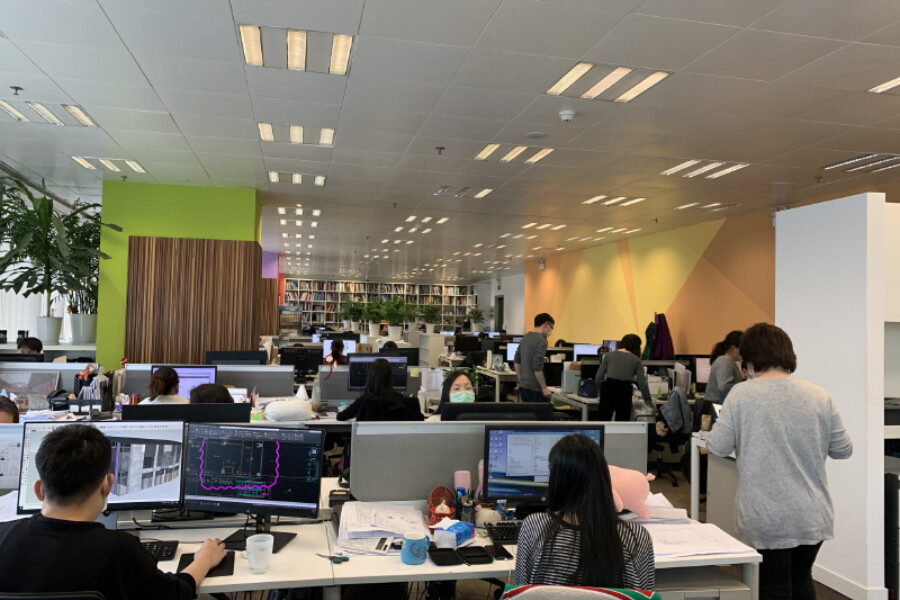
Beyond the pandemic: Expanding our capabilities and reach at our Shanghai studio
As the world begins the process of emerging from the COVID-19 pandemic, we will be taking a look at how Chapman Taylor’s international studios are responding to changed outlooks, changed market requirements and changed approaches to how we work as they adjust to the “new normal”. Next up in the series is our Shanghai studio, where recovery from the pandemic was a lot quicker than elsewhere in the world. Directors Peter Mackey and Johnny Jiang describe the way in which the studio rapidly bounced back from the lockdown period, the strong mix of sectors in which the studio now works and the great potential for expansion offered by the buoyant Chinese market.
A relatively swift re-emergence from the pandemic
Although this country was the first to be hit by the COVID-19 pandemic, life in Shanghai, like much of China, returned to something more like normal in mid-2020. The studio has been full, albeit we have been observing strict hygiene procedures such as distancing and the use of sanitisers and masks.
There has never really been a work-from-home culture in China. Apart from the lockdown period in spring 2020, most people have been in the studio and are happy to be here.
Over the course of 2020, we expanded our studio numbers to help reinforce our capabilities and widen our range of talents, and we are now in a process of consolidation, making use of our resources and skill sets as efficiently as possible to ensure that any future growth is sustainable.
A healthy mix of sectors and projects
We have a very healthy mix of project types at present, from large urban masterplans, resorts and mixed-use schemes to office and retail asset enhancements and the sensitive renovation of heritage buildings. All our teams, in various sectors, have been very busy for several months and we are fully manned.
We are making excellent progress in diversifying our portfolio; for example, transport-orientated developments within the Masterplanning sector are becoming a much more prominent part of what we do as local/national authorities and developers increasingly recognise the social and commercial opportunities that transport hubs offer. Key recent projects in this sector have included Xiaoli Station and Urban Area in Xiong’an and the related Xiong’an Intercity Station project, as well as the 50-hectare Wenzhou Eastern New Town.
Our workplace interiors portfolio is growing, as clients increasingly seek comprehensive fit-out services – generally either a full building fit-out for one occupier or a few different, flexible fit-out projects within the same building, tailored for small companies and start-ups. The wellbeing of the buildings’ occupants is a key element of our design strategy, exemplified by our concepts for Jiaozi Park in Chengdu, Wuxi Economic Development Zone Future Centre in Jiangsu Province and the SINOPEC Free Trade Tower in Haikou, with their many biophilic features and user-centred designs.
We are also seeing a rise in enquiries for hospitality and tourism-related projects, recently including a boutique hotel project and the innovative Future Hotel in Chongqing (for the Curio by Hilton brand).
Retail and leisure remain a key part of our offer, particularly in terms of asset enhancement or as part of wider mixed-use schemes we are designing. For example, we have created bright and modern interior design concepts for Vanke Kunming Shopping Centre, Joy City Shopping Centre in Sanya and Shiyan Shijibaiqiang Mall in Hubei, and we are currently working with developers Future Land on several shopping centre interiors projects across China. We continue to work on major mixed-use schemes with significant retail and leisure components, such as our design concept for the Pudong Zhoupu Mixed-Use District in Shanghai.
The future direction
We have seen more international companies trying to gain a foothold in the Chinese market in recent months, but we believe that we are very well established here and have nothing to fear from new competitors, although we are also never complacent. We constantly monitor the market, the economy and the requirements of clients, and we continuously reassess our own ability to meet those requirements – conducting in-depth research, examining the best innovations and new design approaches and investing in new technology and new talent.
Environmental and social sustainability is a crucial prerequisite for all major projects in China, and in no sector is this requirement more important than in the Masterplanning sector. We now routinely create urban designs according to both 15-Minute City and Sponge City principles, ensuring that the urban districts we create are functionally efficient, liveable, pedestrian-friendly, resilient and viable in the long term. Examples of projects where we have been combining these approaches include our masterplans for Xiong’an New Area in Hebei Province and Dongfang Coastal Area in Hainan, as well as our mixed-use concept for Xiangyang Eco-City in Hubei Province. Respect for the surrounding environment and the seamless integration of nature is a hallmark of all our major urban designs, as can be seen in our concepts for the 1,380-hectare Daxing New Town in Beijing and Jiangjin Central Business District in Chongqing.
We are also seeing a lot more design competitions; these are becoming a routine part of many bidding processes now, even for interiors projects. We have a lot of experience in such competitions and have won many projects as a result of successfully meeting the competition brief with a combination of creativity and commercial/functional realism. Examples include our design for the Shandong Energy Group International Offshore Energy Centre and the much-anticipated Liangjiang Collaborative Innovation Zone in Chongqing.
There is great potential for growth for Chapman Taylor within the Chinese market, given the extraordinary scale and pace of development across the country, and we are carefully analysing opportunities to expand our presence here in a sustainable way so that we can fully embrace the best opportunities that present themselves. Our long-term presence in Shanghai and our strong reputation in a wide range of sectors mean that we are in an excellent position to capitalise on the phenomenal rate of development here and to play our part in shaping the future of the country.
Although this country was the first to be hit by the COVID-19 pandemic, life in Shanghai, like much of China, returned to something more like normal in mid-2020. The studio has been full, albeit we have been observing strict hygiene procedures such as distancing and the use of sanitisers and masks.
272km² Xiong’an New Area in China’s Hebei Province
Although this country was the first to be hit by the COVID-19 pandemic, life in Shanghai, like much of China, returned to something more like normal in mid-2020. The studio has been full, albeit we have been observing strict hygiene procedures such as distancing and the use of sanitisers and masks.
There has never really been a work-from-home culture in China. Apart from the lockdown period in spring 2020, most people have been in the studio and are happy to be here.
Over the course of 2020, we expanded our studio numbers to help reinforce our capabilities and widen our range of talents, and we are now in a process of consolidation, making use of our resources and skill sets as efficiently as possible to ensure that any future growth is sustainable.
A healthy mix of sectors and projects
We have a very healthy mix of project types at present, from large urban masterplans, resorts and mixed-use schemes to office and retail asset enhancements and the sensitive renovation of heritage buildings. All our teams, in various sectors, have been very busy for several months and we are fully manned.
We are making excellent progress in diversifying our portfolio; for example, transport-orientated developments within the Masterplanning sector are becoming a much more prominent part of what we do as local/national authorities and developers increasingly recognise the social and commercial opportunities that transport hubs offer. Key recent projects in this sector have included Xiaoli Station and Urban Area in Xiong’an and the related Xiong’an Intercity Station project, as well as the 50-hectare Wenzhou Eastern New Town.
Our workplace interiors portfolio is growing, as clients increasingly seek comprehensive fit-out services – generally either a full building fit-out for one occupier or a few different, flexible fit-out projects within the same building, tailored for small companies and start-ups. The wellbeing of the buildings’ occupants is a key element of our design strategy, exemplified by our concepts for Jiaozi Park in Chengdu, Wuxi Economic Development Zone Future Centre in Jiangsu Province and the SINOPEC Free Trade Tower in Haikou, with their many biophilic features and user-centred designs.
We are also seeing a rise in enquiries for hospitality and tourism-related projects, recently including a boutique hotel project and the innovative Future Hotel in Chongqing (for the Curio by Hilton brand).
Retail and leisure remain a key part of our offer, particularly in terms of asset enhancement or as part of wider mixed-use schemes we are designing. For example, we have created bright and modern interior design concepts for Vanke Kunming Shopping Centre, Joy City Shopping Centre in Sanya and Shiyan Shijibaiqiang Mall in Hubei, and we are currently working with developers Future Land on several shopping centre interiors projects across China. We continue to work on major mixed-use schemes with significant retail and leisure components, such as our design concept for the Pudong Zhoupu Mixed-Use District in Shanghai.
The future direction
We have seen more international companies trying to gain a foothold in the Chinese market in recent months, but we believe that we are very well established here and have nothing to fear from new competitors, although we are also never complacent. We constantly monitor the market, the economy and the requirements of clients, and we continuously reassess our own ability to meet those requirements – conducting in-depth research, examining the best innovations and new design approaches and investing in new technology and new talent.
Environmental and social sustainability is a crucial prerequisite for all major projects in China, and in no sector is this requirement more important than in the Masterplanning sector. We now routinely create urban designs according to both 15-Minute City and Sponge City principles, ensuring that the urban districts we create are functionally efficient, liveable, pedestrian-friendly, resilient and viable in the long term. Examples of projects where we have been combining these approaches include our masterplans for Xiong’an New Area in Hebei Province and Dongfang Coastal Area in Hainan, as well as our mixed-use concept for Xiangyang Eco-City in Hubei Province. Respect for the surrounding environment and the seamless integration of nature is a hallmark of all our major urban designs, as can be seen in our concepts for the 1,380-hectare Daxing New Town in Beijing and Jiangjin Central Business District in Chongqing.
We are also seeing a lot more design competitions; these are becoming a routine part of many bidding processes now, even for interiors projects. We have a lot of experience in such competitions and have won many projects as a result of successfully meeting the competition brief with a combination of creativity and commercial/functional realism. Examples include our design for the Shandong Energy Group International Offshore Energy Centre and the much-anticipated Liangjiang Collaborative Innovation Zone in Chongqing.
There is great potential for growth for Chapman Taylor within the Chinese market, given the extraordinary scale and pace of development across the country, and we are carefully analysing opportunities to expand our presence here in a sustainable way so that we can fully embrace the best opportunities that present themselves. Our long-term presence in Shanghai and our strong reputation in a wide range of sectors mean that we are in an excellent position to capitalise on the phenomenal rate of development here and to play our part in shaping the future of the country.
We are making excellent progress in diversifying our portfolio; for example, transport-orientated developments within the Masterplanning sector are becoming a much more prominent part of what we do as local/national authorities and developers increasingly recognise the social and commercial opportunities that transport hubs offer. Key recent projects in this sector have included Xiaoli Station and Urban Area in Xiong’an and the related Xiong’an Intercity Station project, as well as the 50-hectare Wenzhou Eastern New Town.
Our workplace interiors portfolio is growing, as clients increasingly seek comprehensive fit-out services – generally either a full building fit-out for one occupier or a few different, flexible fit-out projects within the same building, tailored for small companies and start-ups. The wellbeing of the buildings’ occupants is a key element of our design strategy, exemplified by our concepts for Jiaozi Park in Chengdu, Wuxi Economic Development Zone Future Centre in Jiangsu Province and the SINOPEC Free Trade Tower in Haikou, with their many biophilic features and user-centred designs.
We are also seeing a rise in enquiries for hospitality and tourism-related projects, recently including a boutique hotel project and the innovative Future Hotel in Chongqing (for the Curio by Hilton brand).
Retail and leisure remain a key part of our offer, particularly in terms of asset enhancement or as part of wider mixed-use schemes we are designing. For example, we have created bright and modern interior design concepts for Vanke Kunming Shopping Centre, Joy City Shopping Centre in Sanya and Shiyan Shijibaiqiang Mall in Hubei, and we are currently working with developers Future Land on several shopping centre interiors projects across China. We continue to work on major mixed-use schemes with significant retail and leisure components, such as our design concept for the Pudong Zhoupu Mixed-Use District in Shanghai.
The future direction
We have seen more international companies trying to gain a foothold in the Chinese market in recent months, but we believe that we are very well established here and have nothing to fear from new competitors, although we are also never complacent. We constantly monitor the market, the economy and the requirements of clients, and we continuously reassess our own ability to meet those requirements – conducting in-depth research, examining the best innovations and new design approaches and investing in new technology and new talent.
Environmental and social sustainability is a crucial prerequisite for all major projects in China, and in no sector is this requirement more important than in the Masterplanning sector. We now routinely create urban designs according to both 15-Minute City and Sponge City principles, ensuring that the urban districts we create are functionally efficient, liveable, pedestrian-friendly, resilient and viable in the long term. Examples of projects where we have been combining these approaches include our masterplans for Xiong’an New Area in Hebei Province and Dongfang Coastal Area in Hainan, as well as our mixed-use concept for Xiangyang Eco-City in Hubei Province. Respect for the surrounding environment and the seamless integration of nature is a hallmark of all our major urban designs, as can be seen in our concepts for the 1,380-hectare Daxing New Town in Beijing and Jiangjin Central Business District in Chongqing.
We are also seeing a lot more design competitions; these are becoming a routine part of many bidding processes now, even for interiors projects. We have a lot of experience in such competitions and have won many projects as a result of successfully meeting the competition brief with a combination of creativity and commercial/functional realism. Examples include our design for the Shandong Energy Group International Offshore Energy Centre and the much-anticipated Liangjiang Collaborative Innovation Zone in Chongqing.
There is great potential for growth for Chapman Taylor within the Chinese market, given the extraordinary scale and pace of development across the country, and we are carefully analysing opportunities to expand our presence here in a sustainable way so that we can fully embrace the best opportunities that present themselves. Our long-term presence in Shanghai and our strong reputation in a wide range of sectors mean that we are in an excellent position to capitalise on the phenomenal rate of development here and to play our part in shaping the future of the country.
Pudong Zhoupu Mixed-Use District in Shanghai
The future direction
We have seen more international companies trying to gain a foothold in the Chinese market in recent months, but we believe that we are very well established here and have nothing to fear from new competitors, although we are also never complacent. We constantly monitor the market, the economy and the requirements of clients, and we continuously reassess our own ability to meet those requirements – conducting in-depth research, examining the best innovations and new design approaches and investing in new technology and new talent.
Environmental and social sustainability is a crucial prerequisite for all major projects in China, and in no sector is this requirement more important than in the Masterplanning sector. We now routinely create urban designs according to both 15-Minute City and Sponge City principles, ensuring that the urban districts we create are functionally efficient, liveable, pedestrian-friendly, resilient and viable in the long term. Examples of projects where we have been combining these approaches include our masterplans for Xiong’an New Area in Hebei Province and Dongfang Coastal Area in Hainan, as well as our mixed-use concept for Xiangyang Eco-City in Hubei Province. Respect for the surrounding environment and the seamless integration of nature is a hallmark of all our major urban designs, as can be seen in our concepts for the 1,380-hectare Daxing New Town in Beijing and Jiangjin Central Business District in Chongqing.
We are also seeing a lot more design competitions; these are becoming a routine part of many bidding processes now, even for interiors projects. We have a lot of experience in such competitions and have won many projects as a result of successfully meeting the competition brief with a combination of creativity and commercial/functional realism. Examples include our design for the Shandong Energy Group International Offshore Energy Centre and the much-anticipated Liangjiang Collaborative Innovation Zone in Chongqing.
There is great potential for growth for Chapman Taylor within the Chinese market, given the extraordinary scale and pace of development across the country, and we are carefully analysing opportunities to expand our presence here in a sustainable way so that we can fully embrace the best opportunities that present themselves. Our long-term presence in Shanghai and our strong reputation in a wide range of sectors mean that we are in an excellent position to capitalise on the phenomenal rate of development here and to play our part in shaping the future of the country.

